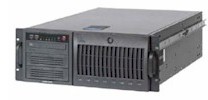

Such an arrangement can allow a contact center to maintain acceptable service level by routing incoming calls to outbound agents during peak hours. An ACD can provide call blending to allow agents to be dynamically allocated to either inbound or outbound functions. Some contact centers perform both inbound and outbound work. By tracking statistics such as the number of incoming calls, calls in queue, call abandons, and talk time on a monitor display in real time, managers can recognize developing problems and quickly take corrective actions to maintain optimum operating efficiency. In addition to routing calls and interacting with other systems such as IVR, voice messaging, and database systems to facilitate call handling, the ACD continuously tracks, displays, and reports on call activities.

The phone number that was dialed (Direct Number Identification Service–DNIS), or.When the ACD receives a call, it will recognize certain information transmitted along with the call: An ACD can range from a few lines for a small system to hundreds of lines, such as systems used in large contact centers. It is considered the hub of a contact center and the most critical technology component.
#Call center system software#
It has both a hardware and software component. These technologies are:Īn Automatic Call Distributor (ACD) is a computerized telephony system that analyzes incoming calls and distributes them based on specific instructions that define how the calls are to be handled. A contact center is supported by many technologies designed to enhance the customer experience, improve the operating and management efficiency, or lower the overall costs of running a contact center.


 0 kommentar(er)
0 kommentar(er)
